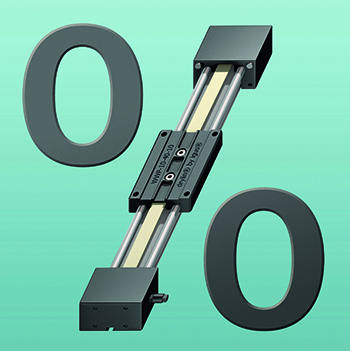
Mechanical engineers often need a basic, space-saving linear guide when designing technology that performs simple tasks, such as vending machines. Since such technology does not handle high loads, high speeds or high positioning accuracy, intricate linear guides are not necessary. However, most solutions on the market are very advanced, leaving manufacturers forced to either pay for features they do not need or develop their own linear guide.
Solution from igus: Toothed belt drive axis starting at $150
igus is now offering the drylin ZLW eco, a ready-to-install entry-level series that is making simple positioning and adjustment tasks extremely efficient and, above all, cost-effective. “A toothed belt axis of this entry-level series with a stroke length of 100 millimeters starts as low as 150 dollars,” said Stefan Niermann, head of igus’ drylin linear and drive technology division. “In comparison, a toothed belt axis from the standard series, which has high-performance features and is therefore unnecessary to use for simple operations, costs almost three times more.” The carriage and shaft end supports are produced by injection molding, which is more cost-effective than mechanical filling used for metal component production. “This also reduces the number of components and thus the installation efforts for every eco linear axis, which in the end is reflected in the low prices of this entry-level series,” explained Niermann. A further cost-saving element of the drylin ZLW eco is the plain bearings used in the sliding carriage, which are made of iglide high-performance plastics. “iglide bearings are forty percent more cost-effective than conventional rolling bearings and 100 percent maintenance-free in operation,” Niermann said. Without compromising the smooth-running operation and durability of the standard series, users can simply install the eco axes and save time and money with the maintenance-free, dry-running triboplastic bearings.
Entry-level series in two sizes
The entry-level drylin ZLW eco has two installation sizes: 0630 and 1040. The base is an anodized drylin W profile made of clear anodized aluminum. At the ends of the profile are plastic shaft end supports for drive technology. A neoprene toothed belt is tensioned between the shaft end supports, which pushes and pulls a solid plastic carriage with a positioning accuracy of 0.3 millimeters. The stroke lengths can be individually adjusted by the user. Due to its lightweight construction, the toothed belt axes weigh only 0.3 kg and 0.7 kg, and can move loads up to 3 kg or 10 kg respectively. Matching motor kits also are available.
igus Inc.
www.igus.com






Leave a Reply
You must be logged in to post a comment.